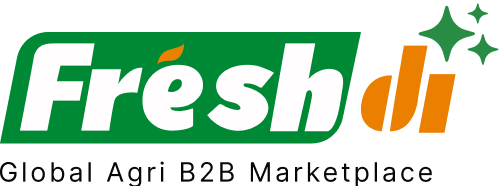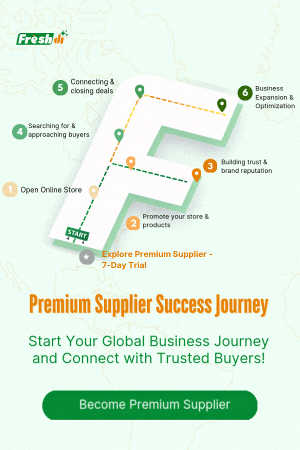Introduction – Vietnam’s Soybean Market by the Numbers
Vietnam might not be the first name that pops into your head when you think of soybean giants, but it’s time to shift that perspective. With a growing role in the global soybean trade, Vietnam is steadily rising as a key exporter in Asia. In recent years, the country has dramatically increased its processing and export capacity, positioning itself as a strategic hub for sourcing soybeans and related products.
According to industry estimates, Vietnam imports over 2 million metric tons of soybeans annually for processing and re-export, largely due to its advanced crushing facilities and cost-effective labor market. The country exports soybean oil, soybean meal, and even unique soy-based products like tofu and edamame to markets across Asia, Europe, and the Middle East.
With global food security becoming a hotter topic, the demand for reliable, verified soybean suppliers is higher than ever. Businesses looking to source soybeans need to take a data-driven approach—focusing on supplier performance, export reliability, certifications, and market reputation.
And that’s where platforms like Freshdi come in handy. They help you make informed decisions by giving insights into verified suppliers, live RFQ (Request for Quotation) trends, and market dynamics.
Deep Dive – Key Production, Export Statistics & Current Demand Data
Let’s get into the numbers.
Vietnam may not be a top grower of raw soybeans, but it plays a crucial role in the global supply chain due to its processing and re-export infrastructure. The country mainly imports soybeans from the U.S., Brazil, and Canada, processes them, and exports refined products to neighboring countries.
Here’s what’s currently trending:
- Soybean oil exports have surged, with refined soybean oil being sent to countries like China, Malaysia, and the Philippines.
- Soybean meal, a by-product of oil extraction, is in high demand, especially in the animal feed industry across Asia.
- Processed soybean products like tofu, tempeh, and frozen edamame are gaining popularity in health-conscious markets like Japan and Korea.
On Freshdi, RFQ volumes for soybean oil and meal products have seen a 30% year-on-year jump, indicating rising demand from global buyers sourcing through B2B platforms.
Top 5 Verified Soybean Suppliers in Vietnam – Proven Export Performers
We’ve analyzed hundreds of verified suppliers on Freshdi to bring you the top performers in 2025. These companies stand out due to their export volume, certifications (like ISO, HACCP), product consistency, and excellent buyer reviews.
1. UPH GOODS COMPANY LIMITED
A top-tier player in Vietnam’s edible oil market, UPH GOODS is renowned for its Tuong An soybean oil. Known for high food safety standards and competitive pricing, they serve markets across Southeast Asia and Africa.
2. RDF CO., LTD
Specializing in frozen edamame, RDF taps into the premium health food segment. With exports to Japan, Korea, and the EU, they’re a go-to for buyers seeking quality and freshness.
3. GIA GIA NGUYEN CO., LTD
Focused on refined soybean oil, Gia Gia Nguyen has built a solid reputation with bulk buyers and private label clients. Their facility holds multiple quality certifications and offers OEM packaging solutions.
4. VINBRAND COMPANY LIMITED
VINBRAND specializes in private-label soybean oil production, offering flexibility for brand-focused buyers. Their wide distribution network includes the Middle East and Eastern Europe.
5. LE NAM MANUFACTURING TRADING SERVICES CO., LTD
This innovative company offers not just tofu products but also tofu-making machines, making them a strategic partner for soy-based product startups and restaurants.
Dynamic Ranking Note
Supplier performance isn’t static. On Freshdi, dynamic rankings such as “Supplier of the Month” or “Top Exporter of the Quarter” allow you to track real-time shifts based on export volumes, buyer reviews, and RFQ engagement. Always check the latest rankings before making a deal.
Market Navigation – Statistical Trends, Value Dynamics & Export Dynamics
Understanding Vietnam’s soybean market means keeping an eye on the moving parts. Here’s how trends are shaping up:
-
Soybean Oil: Prices tend to rise during Q2 and Q3 due to higher global demand for edible oils. Keep an eye on import costs from Brazil and the U.S., which directly affect Vietnam’s export pricing.
-
Soybean Meal: Demand spikes around late Q1 and early Q4, especially from the animal feed industry. Watch out for price changes driven by fluctuations in livestock production cycles.
-
Tofu and Edamame: These products are more niche and seasonal. Demand peaks during festive seasons and New Year periods in Japan and Korea.
Freshdi’s data tools allow buyers to track historical pricing charts and forecast future demand trends. This helps you time your purchase and negotiate better deals.
Conclusion – Leveraging Data for Optimized Supply Chains
Vietnam’s soybean export market might not be the biggest, but it’s smart and strategic. From refined oils to niche products like edamame and tofu, the country has carved out a valuable role in the global supply chain.
The key takeaway? Don’t go in blind. Use supplier data, export performance, and market demand insights to guide your sourcing decisions.
Platforms like Freshdi are changing the game for B2B buyers. With verified supplier profiles, RFQ trend analytics, and dynamic rankings, you get a 360-degree view before you commit to a supplier.
Checklist – Smart Sourcing for Soybeans in Vietnam
✅ Evaluate supplier certifications (ISO, HACCP, Organic)
✅ Compare export volumes and buyer reviews
✅ Look for seasonal price trends and demand spikes
✅ Use RFQ trends to identify high-demand products
✅ Check Freshdi’s dynamic supplier rankings before finalizing deals
Future Outlook – Vietnam’s Role in Global Soybean Value Chains
Looking ahead, Vietnam is expected to expand its soybean processing capabilities even further. With growing health trends, plant-based diets, and demand for sustainable protein, soybeans are going to be big business.
The country’s logistics infrastructure, proximity to major markets, and skilled processing sector make it an increasingly attractive sourcing destination.
Freshdi’s evolving analytics and sourcing tools will continue to empower buyers with real-time insights and performance metrics, simplifying your decision-making process.
FAQs
1. Why should I source soybeans from Vietnam instead of the U.S. or Brazil?
Vietnam offers competitive pricing, processed product variety (like oil and tofu), and flexible packaging options. It’s ideal for businesses needing customization and shorter lead times to Asia.
2. How do I verify if a Vietnamese supplier is legitimate?
Use platforms like Freshdi which only list verified suppliers with certifications, export history, and buyer feedback.
3. What’s the best time of year to buy soybean oil from Vietnam?
Typically during Q1 or Q4, when prices are more stable and supply is abundant. Always monitor seasonal trends for the best deals.
4. Can I request private labeling or OEM services?
Yes, suppliers like VINBRAND and GIA GIA NGUYEN offer private label services. Be sure to confirm packaging and branding capabilities through Freshdi.
5. What documents should I ask for when importing soybeans?
Request a Certificate of Origin, Phytosanitary Certificate (for raw beans), and relevant quality certifications like ISO or HACCP.
References
Placeholder for detailed reference links, trade data sources, and Freshdi analytics tools.


